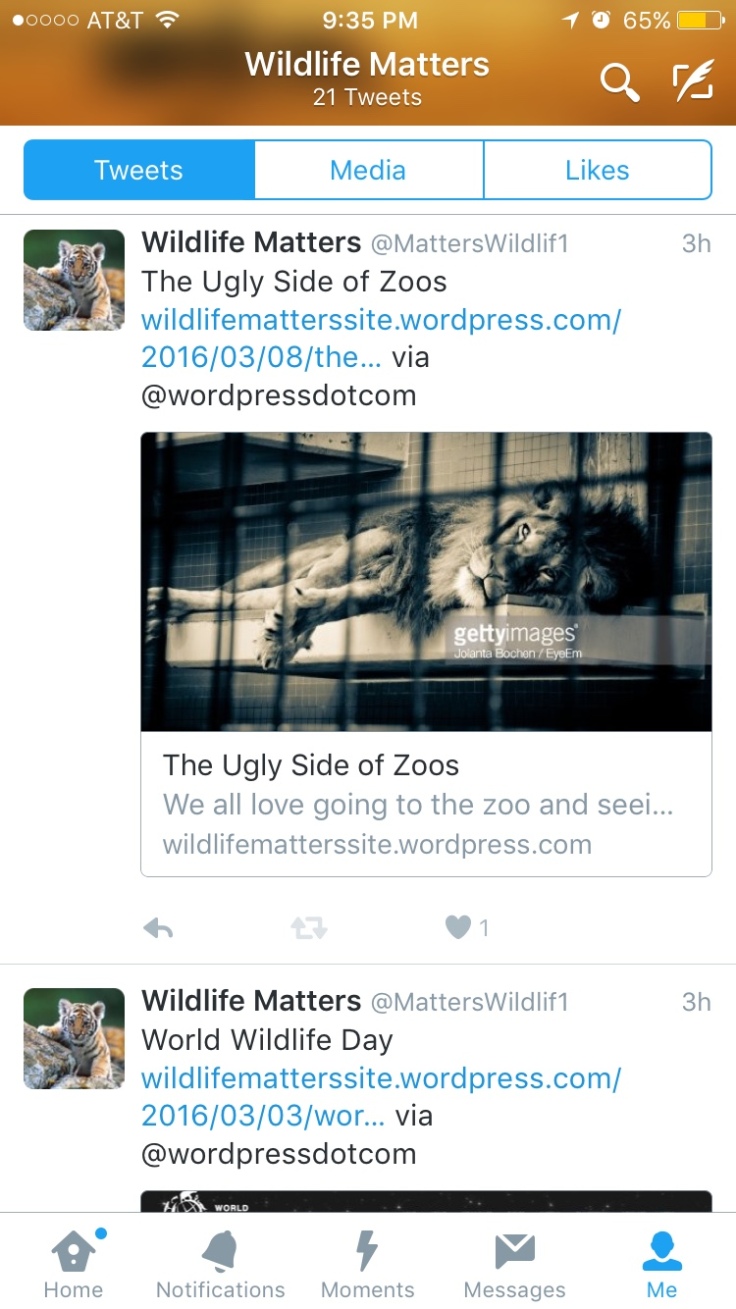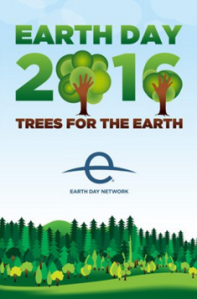Reflecting upon the work we have done for this blog this semester, it is clear that we have met some of our goals and have encountered areas of growth. One requirement of the blog was to disseminate our findings. We did this mainly through Twitter and Facebook. On Twitter, we currently have 19 followers and have received follow-backs from high-profile groups, non-profits, and advocacy organizations. So, while our blog did not reach the amount of views we had hoped, we are interacting with other highly involved organizations. This demonstrates that we are engaging in the larger dialogue around environmentalism and wildlife conservation.

Encouraging more dialogue is something that our blog could have grown more in and pursued more. We received a handful of “likes” but did not receive any comments or such. We could have actively commented on other blogs and articles to insert ourselves more into the dialogue. However, the wide scope of our blog topic allowed us to engage with a wide and varied set of advocacy groups and “arms” of this social movement. What I mean is this: each post we did was on a vastly different topic and thus allowed us to gain a deeper, richer understanding of that specific part of the environmentalism or animal rights. So, we learned about circuses, fresh water, deforestation etc. more deeply and connected with organizations that are doing work in these specific areas.
Connecting this to class concepts, our topic/social movement of environmentalism, and wildlife rights and habitat conservation embodies participatory culture, social networking, and democracy.
Participatory culture: This social movement cannot and does not simply exist in digital communities. In order for this movement to make change, it HAS to move beyond the screen into real life, every day, participatory action. People must get involved in protests, planting trees, promoting education, advocating for policy change, and otherwise participating in the work necessary to preserve our planet and animal habitats.

Community: This social movement is defined by community. Community is at the heart of this movement from the animals to the activists. Animals thrive on community, living with one another and using the communities in which they live to survive in the ecosystem. This social movement also embodies community in both digital and physical spaces. While environmentalism is a broad movement with different, specific sects, it is unified in the connected nature. For example, a group focused on preserving fresh water sources is also going to be somewhat concerned about fish, ecosystems, global warming, and deforestation among other topics. Everything in the environment is connected where one loss affects all systems. This means that activists have to be connected in community to make a big change that helps all of the systems. Digital technologies allow for community to take place because it helps educate activists on other topic areas within the social movement.
Digital divides: The major “con” to this social movement is the digital divide embedded in it. Not everyone has access to digital technologies that would allow for them to be more connected and educated. So, while environmentalism affects all people everywhere, not all people know how they play unique roles in it simply because they do not have access to this education or ways of getting involved. People living in severely impoverished or developing countries may not even have a working understanding of how they negatively or positively impact the environment.
The class concepts allowed us to analyze the effectiveness of the social movement at large. They were difficult to incorporate into the blog posts because our posts were focused on the transmission view of communication – educating the wider public on the exigence of the issue at hand. However, the class concepts allowed us to step back and see from a bird’s eye view how the social movement was operating and in what ways they can do better particularly with online communication.
Personally, I gained new insights into the varied nature of this social movement. I have also learned how to critique social movements, and determine best practices for online communication and news dissemination.
We have a better understanding of how to stay involved in social movements. We have also gained knowledge about how to interact with social movements online and how to disseminate information in strategic ways.
Unify and put together rallies that advocate for policy change. Do community events that educate people on the issue. Bring in an actor for the social movement to help educate and connect people. For example, bring in an official from Nepal to discuss how they have been successful in preventing rhino poaching over the past two years. Promote initiatives that unify the different, varied parts of the movement. So, for example, bring together main actors of groups like Vets Without Borders, animal sanctuary activists, and UN environmental spokespeople to discuss ideas and connect the movement to your audience.
Erin will continue to post as a hobby and do research. I am graduating and do not plan to keep it up. To our readers, thank you for following us on this journey as we learned, educated, and explored the issues surrounding wildlife conservation.











Recent Comments